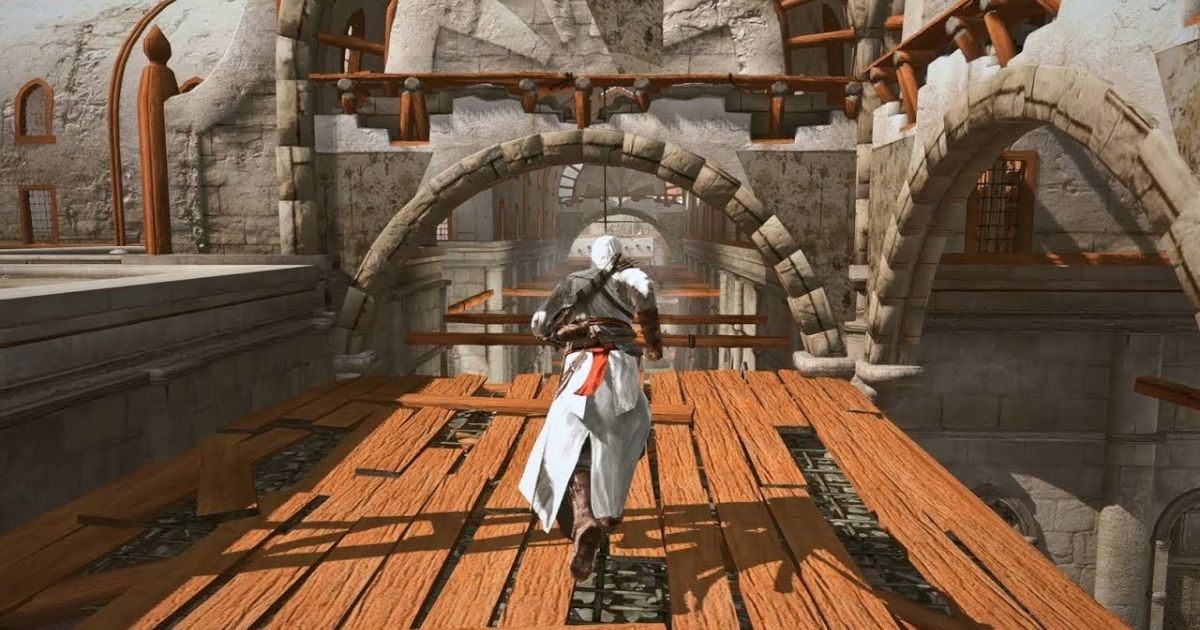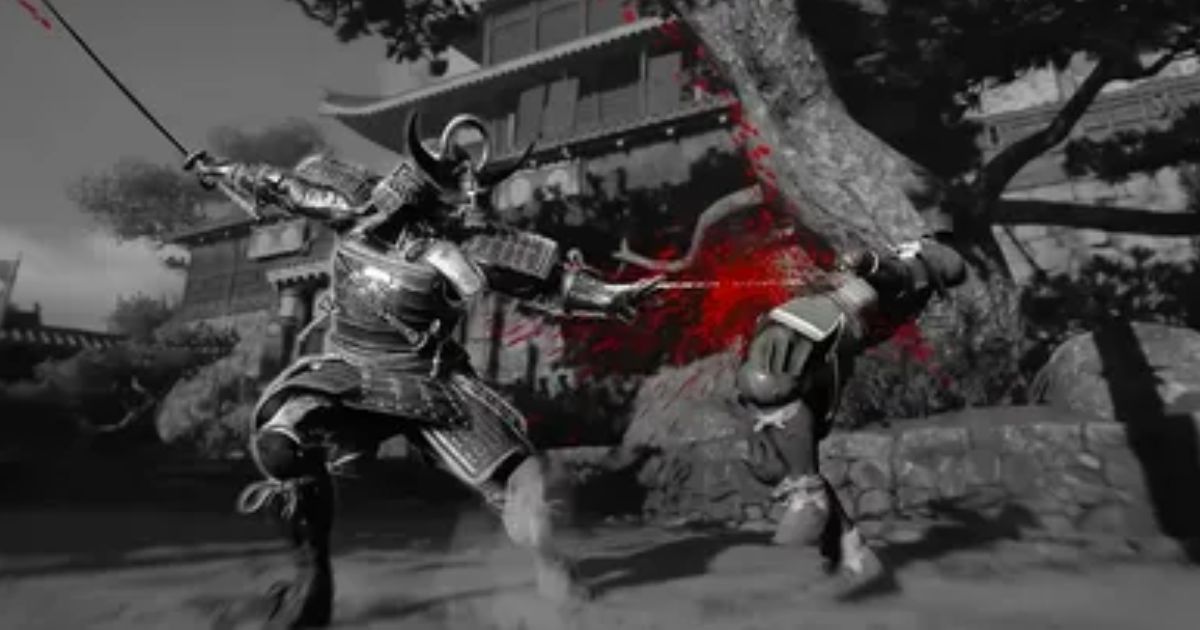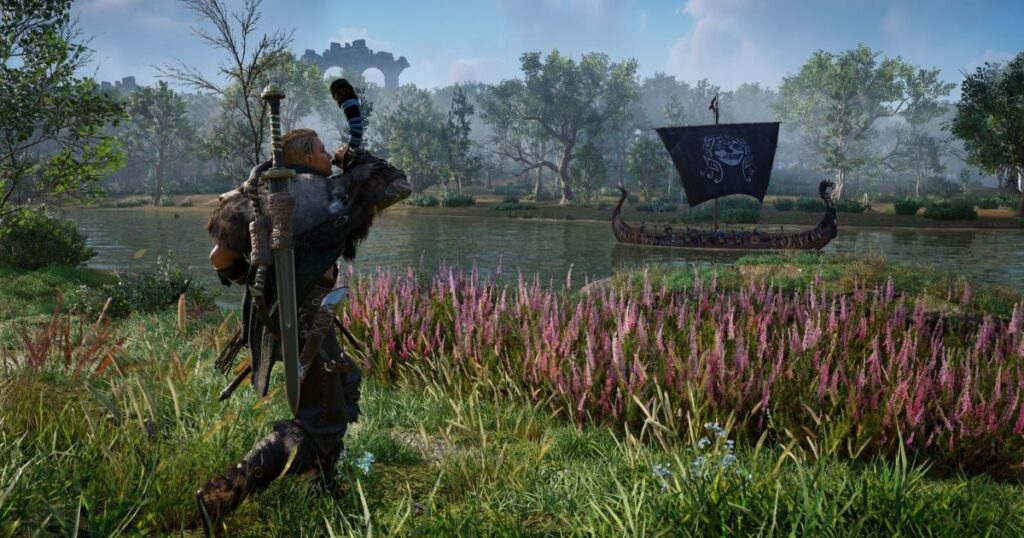Assassin’s Creed Shadows takes players deep into feudal Japan with breathtaking visuals, cinematic combat, and an open world full of detail. But with such stunning graphics comes the challenge of balancing performance and visuals, especially if you’re aiming for smooth gameplay without sacrificing too much eye candy. Whether you’re on a high-end rig or a mid-range setup, tweaking the correct graphics settings can make all the difference. In this guide, we’ll walk you through the best ways to optimise assassin’s creed shadows graphics settings so you can enjoy fluid gameplay, sharper visuals, and the ultimate immersive experience tailored to your system.
Why Optimise Your Graphics Settings?
You play Assassin’s Creed Shadows on PC, and right away, you notice the game’s demands. Dense urban areas in feudal Japan, complete with bustling markets and intricate architecture, stress your GPU. Poor optimisation leads to stuttering, low FPS, and visual artefacts that pull you out of the experience. You optimise to maximise performance while preserving the game’s artistic vision, think realistic lighting that casts dynamic shadows during stealth sequences or detailed character models that make Naoe’s hair flow naturally in the wind.Optimisation matters because the game features advanced technologies like RTGI, which simulates realistic light bouncing for more immersive environments. However, enabling everything at Ultra can cause FPS to drop below 30 on mid-range hardware. You start by assessing your setup: Is Assassin’s Creed Shadows on Xbox Game Pass Check your GPU (e.g., RTX 3060 or better for RT), CPU, RAM (at least 16GB), and storage (SSD recommended to reduce loading times). Tools like MSI Afterburner help monitor FPS, GPU usage, and temperatures during tests. Run the in-game benchmark tool to baseline your performance before tweaks.
Common pitfalls include ignoring VRAM limits, as shadows can consume up to 8GB of VRAM on high settings, or overlooking upscaling technologies like DLSS for NVIDIA users or FSR for AMD users. You avoid these by methodically adjusting settings in the game’s menu, restarting after significant changes, and testing in varied scenarios like open fields versus crowded towns.
Breaking Down Key Graphics Settings

You access the assassin’s creed shadows pc performance via the options tab. It splits into Display and Scalability (Graphics) sections. I explain each primary setting, its impact on visuals and performance, and why you tweak it.
Start with Display Settings:
- Field of View (FOV): You set this to 85-100%. Higher values show more of the world, aiding awareness in combat, but they increase GPU load by rendering extra elements. Stick to 85% for balance on lower-end rigs.
- Display Mode: Choose Borderless Window. It allows easy alt-tabbing without crashes, though Fullscreen might squeeze out a few extra FPS on some systems.
- VSync: Turn this off. It caps FPS to your monitor’s refresh rate to prevent tearing, but introduces input lag. Use NVIDIA or AMD control panels for adaptive sync if you have G-Sync or FreeSync.
- Resolution: Match your monitor’s native resolution (e.g., 1920×1080 for 1080p). Lower it only as a last resort for massive FPS gains, but pair it with upscaling to avoid blur.
- Frame Rate Limiter and Target: Set both to Off initially. Enable a target if using Dynamic Resolution, aiming for 60 FPS.
- Dynamic Resolution: Disable unless FPS fluctuates wildly. When enabled, it dynamically scales the resolution, setting the minimum to 38-50% for clarity without compromising performance.
- Upscaler Type and Quality: NVIDIA users select DLSS in Quality mode; AMD users opt for FSR on Performance. This renders at lower internal resolution and upscales, boosting FPS by 20-40%.
- Frame Generation: Enable for mid-range GPUs. It interpolates frames, pushing FPS from 50 to 70+, but adds a slight input lag that is significant for single-player but less ideal for competitive play.
- Motion Blur and Chromatic Aberration: Turn both off. They add cinematic effects but blur fast movement, reducing clarity in action-packed scenes.
Now, dive into Scalability Settings:
- Ray Traced Global Illumination (RTGI): You enable “Diffuse Everywhere” on capable hardware for realistic lighting. It enhances shadows and ambience, but at the cost of 20-30% FPS. Drop to “Diffuse Hideout Only” on low-end setups.
- Ray Tracing Quality and BVH Quality: Set to Medium/High and Low, respectively. Higher RT Quality enhances reflections, but BVH (bounding volume hierarchy) optimisations yield diminishing returns beyond Low.
- Screen Space Effects: Go High. This handles ambient occlusion and reflections, adding depth without a significant performance impact, resulting in only a 5-10% drop in FPS from Medium.
- Light Source Quality: Ultra High on high-end; High elsewhere. It affects dynamic lights from torches or the sun, crucial for immersion in night stealth missions.
- Shadow Quality: Medium strikes the sweet spot. High improves sharpness but spikes GPU usage in foliage-heavy areas.
- Texture Streaming Pool: Match your VRAM Low for 6GB, Medium for 8GB, High for 12GB+. Higher settings reduce pop-in but crash on low-VRAM cards.
- Post Effects: Low to Medium. Covers bloom and lens flares. High adds flair but minimally impacts FPS.
- Water Quality: High. Realistic ripples and reflections enhance rivers and coasts without significant costs.
- Particle Quality: High. Boosts effects like smoke from explosions or rain. Ultra High barely improves visuals, but tanks performance.
- Loading Distance and Drawing Distance: Set both to High. They control how far objects load, preventing pop-in during parkour. Low saves FPS but feels jarring.
- Micropolygon: Medium. This fine-tunes geometry detail; High reduces aliasing in distant objects.
- Terrain Quality, Deformation, Scatter Density: High for all. Terrain adds landscape detail, Deformation handles footprints in snow, and Scatter populates grass keys for an open-world feel without massive hits.

Virtual Texture
: Medium. Optimises texture loading; higher for SSDs.
Character Quality
: High. Ensures detailed models for Naoe and Yasuke, crucial for cutscenes.
Hair Strands:
Player Only or Off. Strand-based hair looks amazing on Naoe, but it can significantly reduce FPS; disable it on low-end systems.
Cloud Quality and Fog Quality:
Medium and High. Clouds add sky realism; How Long to Beat Assassin’s Creed Shadows Fog enhances atmosphere in misty mornings and low-impact settings.
You tweak these based on benchmarks. Test in diverse areas: Rural fields stress Scatter and terrain, while cities hit shadows and particles.
Optimised Settings for Low-End Hardware
Do you own a budget PC like an RTX 3060 or GTX 1660 with 8GB RAM? Focus on stability over visuals to hit 60 FPS at 1080p.
Use these settings:
- Display: FOV 75%, Borderless Window, VSync On, Resolution 1920×1080, Dynamic Off, Upscaler FSR Performance, Frame Generation On, Motion Blur Off.
- Graphics: RTGI Diffuse Hideout Only, RT Quality Low, BVH Low, Screen Space Medium, Light Source Low, Shadow Low, Texture Pool Low, Post Low, Water Medium, Particle Medium, Loading Low, Drawing Low, Micropolygon Low, Terrain Low, How to Optimize Your PS5 for Ray Tracing Deformation Low, Scatter Low, Virtual Low, Character Low, Hair Off, Cloud Low, Fog Low.
Expect 40-60 FPS. Enable Frame Generation for boosts, and lower resolution if needed. Update drivers, NVIDIA’s 572.83 helps. On Steam Deck, lock to Low preset with FSR Performance for 30 FPS stability.
You notice improvements immediately: Smoother parkour, less stuttering in fights. If FPS dips, disable RTGI entirely (though it’s always on minimally).
Optimised Settings for Mid-Range Hardware
You rock an RTX 3070 or RX 6700 XT with 16GB RAM? Aim for 60-90 FPS at 1440p with some eye candy.
Apply these:
- Display: FOV 85%, Borderless, VSync Off, Resolution 2560×1440, Dynamic Off, Upscaler DLSS Quality, Frame Generation On, Motion Blur Off.
- Graphics: RTGI Diffuse Everywhere, RT Quality Medium, BVH Low, Screen Space High, Light Source High, Shadow Medium, Texture Pool Medium, Post Medium, Water High, Particle High, Loading High, Drawing High, Micropolygon Medium, Terrain High, Deformation High, Scatter High, Virtual Medium, Character High, Hair Player Only, Cloud Medium, Fog High.
This setup yields 50-70 FPS outdoors, with higher frame rates in hideouts. Cap FPS at 60 via NVIDIA Control Panel to smooth spikes during town entries.
You enhance visuals without crashes. Medium shadows save 10% GPU while keeping realism.
Optimised Settings for High-End Hardware
Do you boast an RTX 4080 or RX 7900 XTX with 32GB RAM? Crank it up for 4K glory at 100+ FPS.
Go with:
- Display: FOV 100%, Borderless, VSync Off, Resolution 3840×2160, Dynamic Off, Upscaler DLSS Quality, Frame Generation Off (or On for ultra-smooth), Motion Blur Off.
- Graphics: RTGI Diffuse + Specular Everywhere, RT Quality Very High, BVH High, Screen Space High, Best Nintendo Switch Games to Play on an Emulator Light Source Ultra High, Shadow High, Texture Pool Ultra High, Post High, Water Very High, Particle Ultra High, Loading Ultra High, Drawing Ultra High, Micropolygon High, Terrain Very High, Deformation High, Scatter Ultra High, Virtual High, Character Ultra High, Hair All Characters High, Cloud Ultra High, Fog Very High.
Hit 78 FPS average at 1440p Ultra, scaling to 4K with DLSS. RTGI shines here, making Japan feel alive.You push boundaries, enable Hair Strands for all without drops.
Advanced Optimisation Tips and Troubleshooting

You fine-tune further with external tools. Use Special K for frame caps, reducing spikes by 25%. Monitor with MSI Afterburner; aim for under 80% GPU usage to avoid thermal throttling.
Troubleshoot low FPS: Update to the latest drivers, close background apps, and ensure SSD installation. If crashes occur, lower the Texture Pool. Time-of-day changes can drop FPS restart after tweaks.For RT lovers, keep RTGI on, but pair it with DLSS Performance for a 40% uplift. On older CPUs like Ryzen 5 3600, expect spikes to upgrade if possible.Community tweaks from Reddit suggest Low Drawing Distance for 8GB GPUs, gaining FPS with minimal pop-in thanks to Virtualised Geometry.
Performance Benchmarks and Real-World Testing
I draw from benchmarks: On the RTX 4060 at 1080p with DLSS Quality and low optimised settings, Windows 10 vs Windows 11: Which Is Better for Gaming in 2025 RTGI achieves 50-70 FPS. RTX 4070 Ti Super at 1440p sees 40% gains from optimised vs. maxed. Laptop RTX 3070 averages 71 FPS with my mid-range setup.
Conclusion
Optimising your graphics settings in best pc to run assassin’s creed shadows is all about finding the right balance between stunning visuals and smooth performance. By fine-tuning options like resolution, textures, shadows, and anti-aliasing, you can significantly improve FPS while still enjoying the game’s immersive world of feudal Japan. Remember, every PC build is different, so test settings, monitor performance, and adjust as needed to get the best results for your system. With the right tweaks, you’ll unlock a seamless encounter that enables you to concentrate on what really counts: mastering the way of the shinobi and samurai in assassin’s creed shadows rtx 5090 optimization.
FAQ
What are the best graphics settings for Assassin’s Creed: Shadows?
The best settings depend on your system. Generally, lowering shadows, volumetric fog, and post-processing while keeping textures on high provides a good balance of performance and visuals.
How can I increase FPS in Assassin’s Creed: Shadows?
To boost FPS, reduce resolution scaling, disable motion blur, lower shadow quality, and use upscaling features like NVIDIA DLSS, AMD FSR, or Intel XeSS if supported.
Does Assassin’s Creed Shadows support ray tracing?
Yes, the game supports ray-traced reflections and shadows on compatible GPUs. However, enabling them can significantly impact performance, so use upscaling to maintain a smooth frame rate.
What’s the best resolution to play Assassin’s Creed: Shadows?
For most players, 1080p or 1440p strikes an outstanding balance. If you have a powerful GPU, 4K is possible, but you may need DLSS or FSR to maintain smooth gameplay.
Is Assassin’s Creed: Shadows CPU or GPU-intensive?
The game is primarily GPU-intensive due to its high-quality visuals, but certain areas and AI-heavy sequences can also tax the CPU. Ensuring both are optimised helps achieve stable performance.






